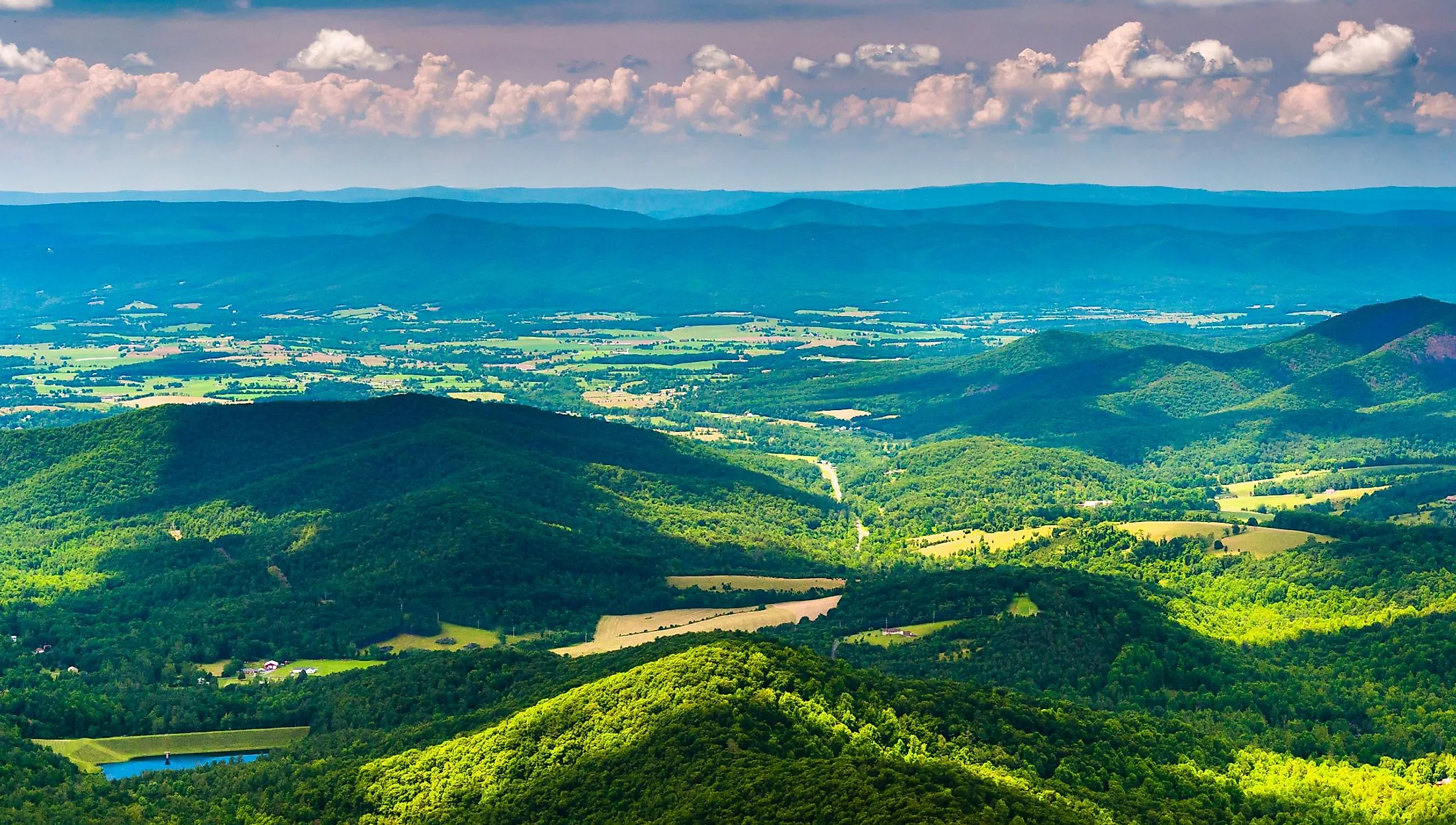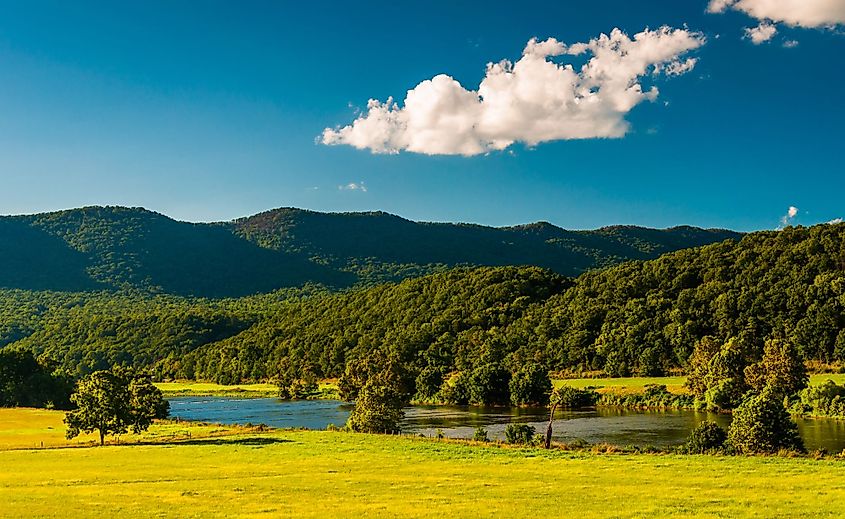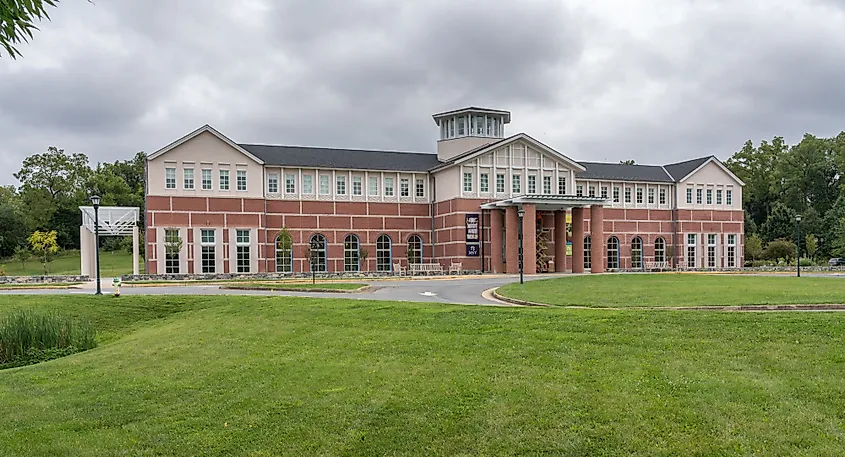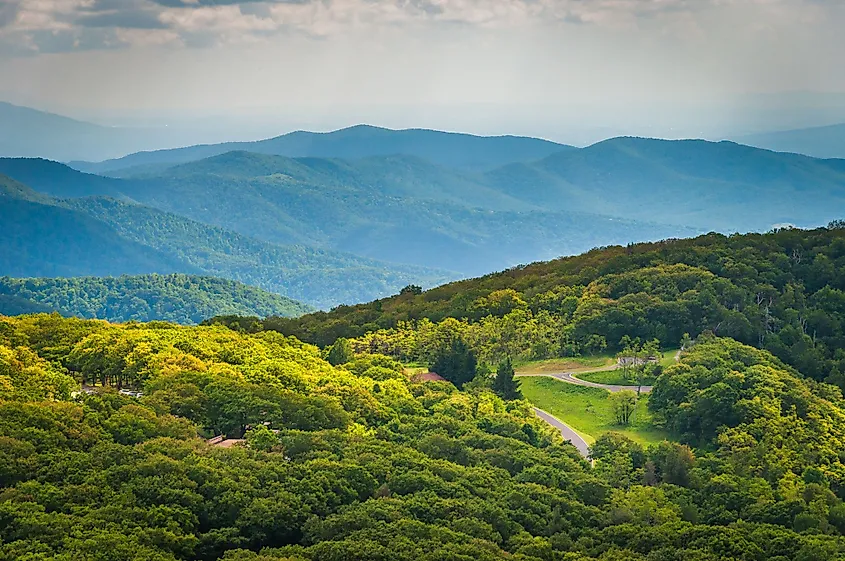
Shenandoah Valley
Shenandoah Valley is a part of the Great Appalachian Valley, located in the US State of Virginia and the Eastern Panhandle of the state of West Virginia. The valley is associated with Shenandoah National Park, which opened in 1935, encompassing nearly 200,000 acres along the Blue Ridge Mountains. Smooth back roads are spread throughout the valley connecting towns, farms, and wineries with scenic roads popular for bikers and motorcyclists. Shenandoah Valley is mainly known for its natural beauty and rich history and was considered the Confederacy's Breadbasket during the Civil War. The scene from the air or over the mountain peaks on any side of the valley is studded with the many flows and rivers streaming from the ridge, which appear as a magnificent complex of beautiful threads and a lush green tapestry.
Geography And Climate Of Shenandoah Valley

Shenandoah Valley is clearly defined, stretching to the south from the borders of Harpers Ferry on the Potomac River and set between the Blue Ridge eastwards and the Allegheny Mountains westwards. The valley groups nine counties that are Berkeley and Jefferson, located in West Virginia, and Frederick, Clarke, Shenandoah, Warren, Rockingham, Page, and Augusta in Virginia. Shenandoah Valley, which is almost 150 miles long and about 25 miles wide, often expands southwards to the James River, including Rockbridge County. On the other side, Massanutten Mountain stands from a point east of Harrisonburg for about 50 miles northwest, peaking at more than 3,000 feet, to split the north and south forks of the Shenandoah River.
The climate in Shenandoah National Park is temperate, with warm, humid summers and winters being very cold and snowy, with cloudy skies around the year. Temperatures fluctuate between -4 °C and 31 °C and are hardly below -12 °C or above 35 °C. The best times to visit Shenandoah National Park for warm-weather activities are between June and September.
Brief History Of Shenandoah Valley

Native Americans inhabited the Shenandoah Valley for around 11,000 years before the European arrival. Despite the arrival of the Europeans initially in 1632 by Jesuit priests, the first European credited with exploring the Valley was John Lederer in 1669. The area was later on officially settled by European colonists in 1730. The valley hosted some events during the American Civil War, where it was an arena for a series of Confederate battles and maneuvers under military generals like Joseph E. Johnston, who achieved a reputation for his actions during the Shenandoah Valley campaigns.
The Population And Economy Of Shenandoah Valley
The current population of Shenandoah is estimated to be 2,304 residents, with 96.14% born in the United States and 75.60% of them born in Virginia. Almost 1.75% of residents are not US citizens, with the majority of them coming from Africa.
Virginia's Shenandoah Valley is a varied region with a sturdy manufacturing base and lively technology sector that includes inventions in agriculture, information technology, and health care, developing a stable economy where businesses flourish. The region is extremely rich in natural resources and claims a powerful cluster of employers specialized in manufacturing, logistics, and agriculture. Food and beverage production is at the core of the manufacturing sector, hiring more than 5% of the Valley's labor force. Moreover, the average income of a Shenandoah Valley resident is $24,967 a year, undergoing a 5.8% income tax rate and 5.3% sales tax rate.
Top Attractions In Shenandoah Valley
Shenandoah National Park

The park was initially established in 1935 as a preserve covering 311 square miles in the Blue Ridge segment of the Appalachian Mountains. Shenandoah National Park is known for its landscape, featuring some of the most magnificent views in the eastern states. Skyline Drive runs along the park winding between the peaks and valleys. This entrance to the crest of the Blue Ridge is a result of a significant era of the granitic and transformed basaltic elevations, which were curved and oppressed by millions of years of erosion.
Natural Bridge
Natural Bridge State Park has been elected as a Virginia historic landmark as well as a national historic landmark. The bridge was initially a holy site for the Monacan Indians, to be later a part of an area obtained in 1774 by Thomas Jefferson, who built a two-room cottage near the bridge, keeping one room for guests.
Moreover, more attractions are famous for visitors, like the Museum of the Shenandoah Valley, which opened in 2005, and displays the region’s culture and history, in addition to the many limestone caves in the area. Located in the center of historic and scenic west-central Virginia in the Blue Ridge and Allegheny Mountains, the Shenandoah Valley provides excellent transportation infrastructure, joining marketplaces north to south and east to west.











